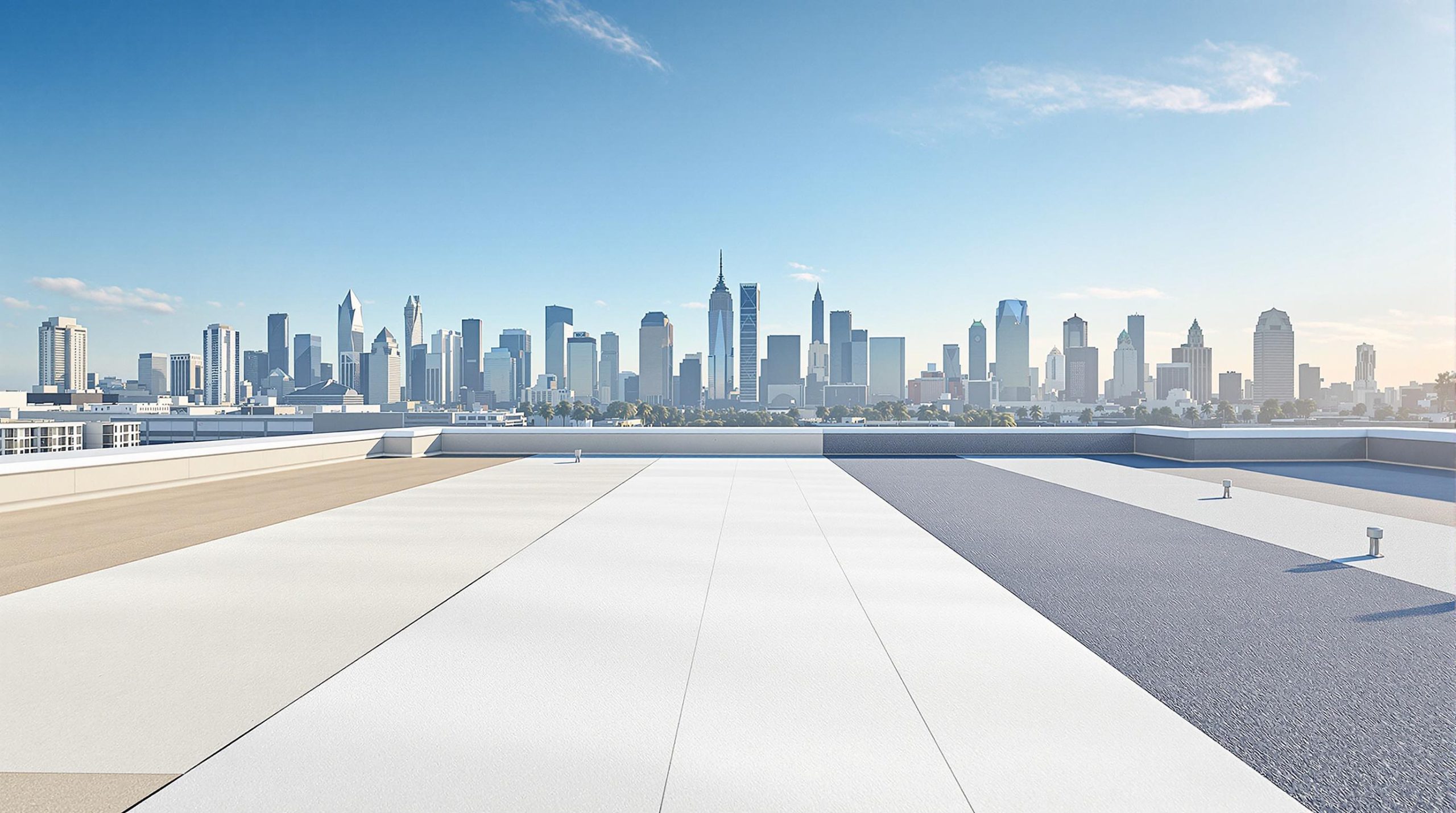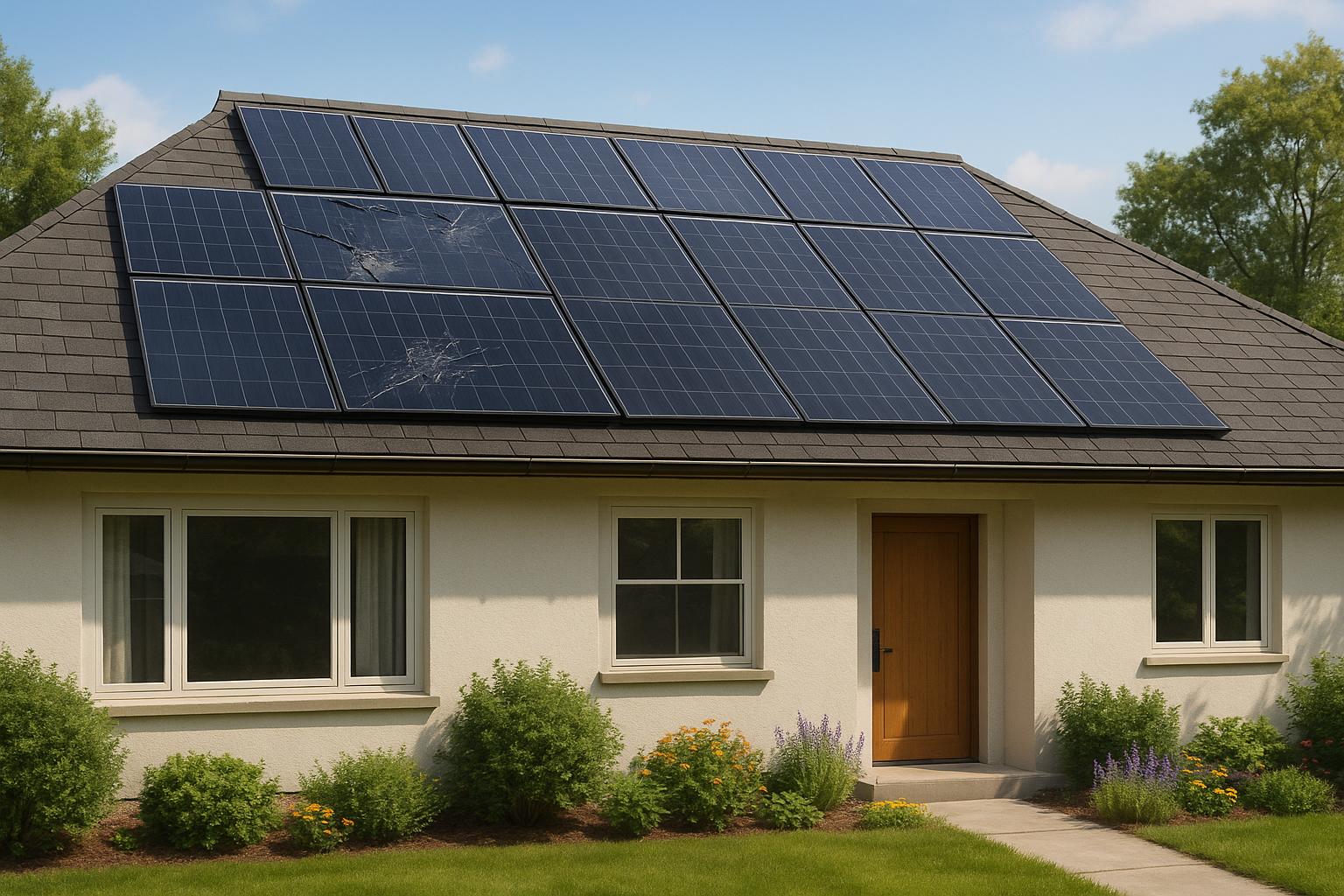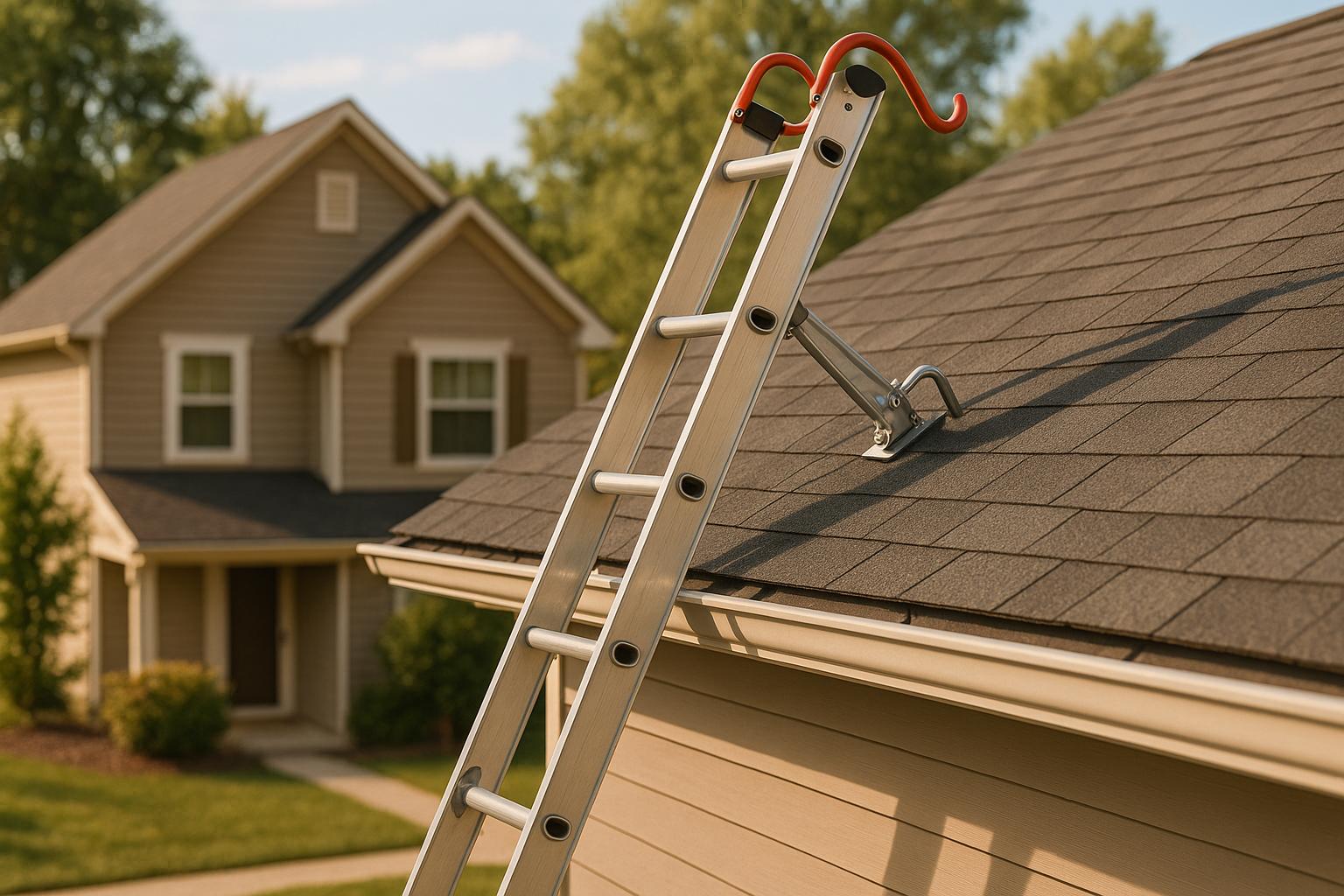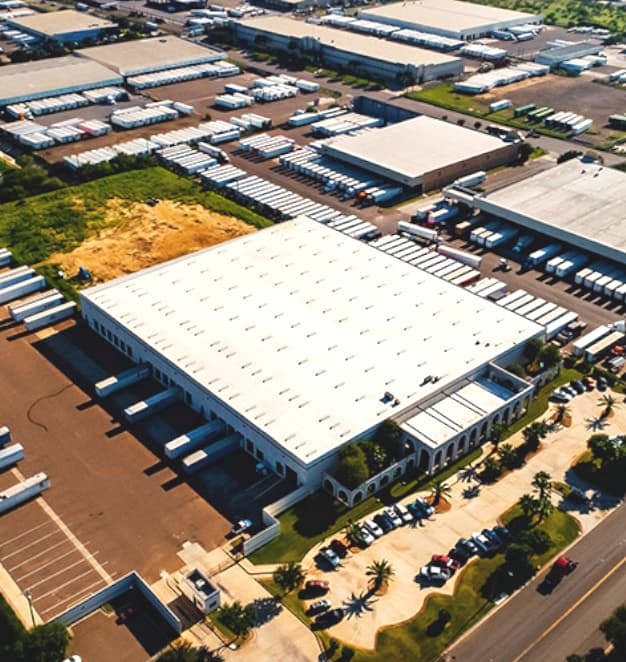Protect your commercial roof from water damage in Los Angeles’ unpredictable weather. Here’s a quick guide to the top waterproofing systems for commercial roofs:
- Liquid Membrane Systems: Seamless, flexible, and UV-resistant. Ideal for roofs with complex shapes.
- Sheet Membrane Systems: Durable, long-lasting, and great for flat roofs. Handles intense UV exposure and heavy rains.
- Spray Foam Roofing: Combines waterproofing with insulation. Reflects heat and reduces cooling costs.
Quick Comparison
| Feature | Liquid Membrane | Sheet Membrane | Spray Foam |
|---|---|---|---|
| Cost (per sq ft) | $4–$8 | $7–$12 | $5–$9 |
| Lifespan (yrs) | 10–15 | 15–20 | 12–18 |
| Energy Efficiency | Moderate | High | Very High |
| UV Resistance | Good | Excellent | Good |
| Maintenance Needs | Moderate | Low | Low |
Choose the right system based on your roof’s design, budget, and maintenance needs. Regular inspections and professional installation are key to long-lasting performance.
Easily Waterproof A Flat Roof With Liquid Rubber Membrane
1. Liquid Membrane Systems
Liquid membrane systems provide a reliable way to waterproof commercial roofs in Los Angeles. These systems involve applying a liquid material that hardens into a seamless barrier, effectively keeping water out.
The process starts with roof preparation, followed by priming to ensure proper adhesion. Then, the liquid membrane is applied evenly across the surface, curing into a durable, protective layer.
Key advantages include a smooth, joint-free surface, resistance to UV damage (essential for sunny Southern California), flexibility to handle thermal expansion, and easy repairs through re-coating.
To maximize their lifespan, it’s important to schedule regular roof inspections and maintenance. This helps keep the waterproofing system in top condition.
2. Sheet Membrane Systems
Sheet membrane systems are a reliable choice for waterproofing commercial roofs in Los Angeles. These pre-made rolls of material create a durable barrier to keep water out.
Material Composition and Types
Sheet membranes are made from synthetic rubber or modified bitumen, designed to last. Common options include EPDM, TPO, and modified bitumen membranes. Each material is well-suited for LA’s hot climate and strong UV rays.
Installation Process
During installation, professionals carefully roll out and secure the membrane sheets, ensuring seams are perfectly aligned for effective waterproofing.
Performance Characteristics
These systems offer several benefits that make them ideal for commercial properties in Los Angeles:
| Feature | Benefit |
|---|---|
| UV Resistance | Stands up to the intense Southern California sun |
| Weather Durability | Handles the temperature swings typical of LA |
| Longevity | Can last 20-30 years with proper care |
| Wind Resistance | Protects against strong Santa Ana winds |
Maintenance Requirements
Regular upkeep is essential to prevent small issues from turning into big problems. Key tasks include:
- Quarterly seam inspections
- Monthly removal of debris
- Semi-annual cleaning
- Annual evaluation for needed repairs
sbb-itb-d1d6490
3. Spray Foam Roofing
Spray polyurethane foam (SPF) roofing offers a seamless waterproofing option for commercial roofs in Los Angeles. The foam adheres directly to the roof, creating a continuous barrier. This method also provides insulation while working well alongside other waterproofing solutions.
Material Properties
SPF roofing forms a rigid foam layer with key characteristics:
- R-value: 6.5 per inch of thickness for excellent insulation
- Seamless Application: Prevents water from seeping in
- Lightweight: Weighs about 0.5 lb/ft²
- Self-Flashing: Automatically seals around roof penetrations and curbs
Application Process
Installing SPF roofing requires dry weather and skilled professionals:
| Installation Step | Requirements |
|---|---|
| Surface Prep | Clean, dry surface at 50–85°F |
| Weather Conditions | No rain, humidity below 85% |
| Foam Application | Applied evenly at 1–1.5 inches thick |
| Top Coating | UV-protective elastomeric coating |
These steps are critical for ensuring the roof performs well in Los Angeles’ unique climate.
Performance Benefits
SPF roofing is well-suited for LA’s weather. Its closed-cell structure provides excellent insulation, helping to lower cooling costs. Additionally, the reflective top coating can reduce roof temperatures by as much as 30°F.
Maintenance Requirements
To keep an SPF roof in top condition:
- Recoat every 10–15 years
- Repair any physical damage quickly
- Clean regularly to avoid debris buildup
With proper care, SPF roofs can last over 25 years.
4. Prime American Roofing Solutions
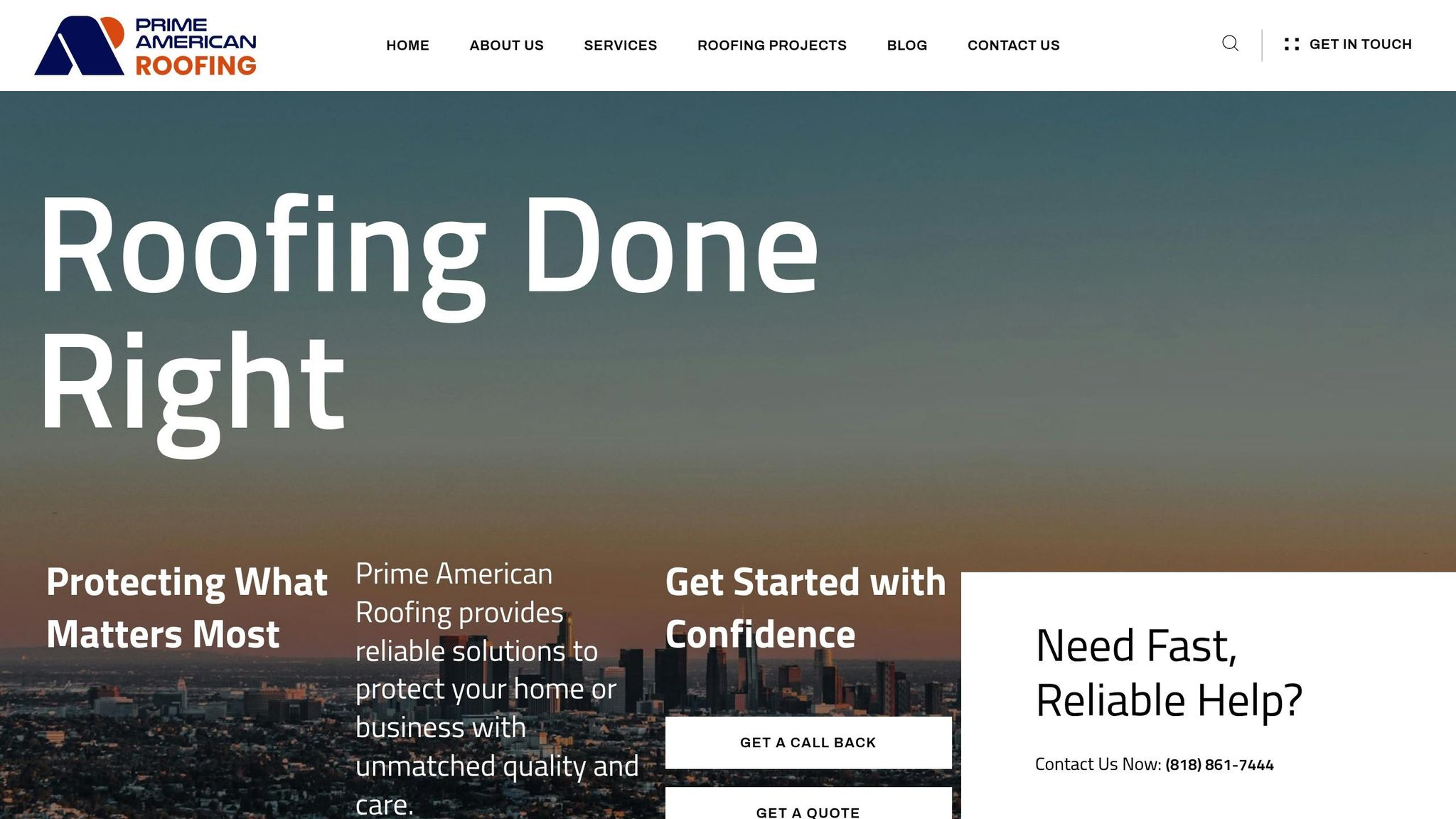
Prime American Roofing delivers waterproofing services for commercial roofs in Los Angeles, focusing on durability and performance. Their approach combines expert evaluations, precise installations, and high-quality materials to ensure effective waterproofing.
Thorough Assessment Process
Every project starts with a detailed roof inspection to identify the best waterproofing solution. Key factors considered during the evaluation include:
| Assessment Factor | Details |
|---|---|
| Roof Structure | Compatibility of materials and structural stability |
| Climate Impact | Effects of UV exposure and local rainfall patterns |
| Building Usage | Type of occupancy and rooftop equipment needs |
| Energy Efficiency | Opportunities to reduce cooling costs |
High-Quality Materials
Prime American Roofing uses commercial-grade materials that meet strict industry requirements. These materials are specifically chosen for their ability to:
- Handle Southern California’s challenging climate
- Provide UV protection
- Enhance energy efficiency
- Deliver long-lasting performance
Precise Installation Process
The installation process is carefully managed to ensure the waterproofing system is effective. Tony Mirzakhanyan, Head of Prime American Roofing, highlights the importance of teamwork:
"Effective teamwork ensures precise execution from assessment to installation".
Ongoing Performance Monitoring
After installation, the company implements a robust system to maintain waterproofing effectiveness:
- Regular inspections to check the system’s condition
- Detailed performance documentation
- Scheduled preventive maintenance
- Emergency response plans
Designed to withstand the unique climate challenges of Los Angeles – such as strong UV rays and occasional heavy rains – these waterproofing solutions are built to perform reliably over time. This systematic approach helps maintain long-term roof integrity.
System Comparison
This section provides a summary of key features for different roofing systems, helping you choose the best option for Los Angeles’ commercial roofing needs.
Performance Comparison Table
| Feature | Liquid Membrane | Sheet Membrane | Spray Foam |
|---|---|---|---|
| Initial Cost (per sq ft) | $4–$8 | $7–$12 | $5–$9 |
| Expected Lifespan (yrs) | 10–15 | 15–20 | 12–18 |
| Installation Time | 2–3 days | 3–5 days | 1–2 days |
| Energy Efficiency | Moderate | High | Very High |
| UV Resistance | Good | Excellent | Good |
| Maintenance Needs | Moderate | Low | Low |
| Weather Impact | Medium | Low | Low |
Application Considerations
Each system has features suited to specific roofing needs:
Liquid Membrane Systems
- Works well for roofs with intricate shapes.
- Seamless application reduces the risk of leaks.
- Requires temperature-controlled installation and yearly upkeep.
Sheet Membrane Systems
- Excellent for large, flat surfaces and areas prone to ponding water.
- Higher upfront costs but offers longer durability.
- Needs specialized equipment for installation.
Spray Foam Systems
- Provides built-in insulation and seals around penetrations.
- Best for energy savings and fast installation.
- Temperature-sensitive during application.
Climate Performance
Los Angeles’ climate presents unique challenges. For instance, sheet membranes are ideal for handling intense UV exposure, making them a great fit for the region’s sunny conditions. Spray foam systems, on the other hand, excel at temperature regulation, which can help cut down on cooling costs during hot summer months.
Installation Requirements
The ideal system also depends on your building’s specific features:
| Building Feature | Recommended System |
|---|---|
| High Foot Traffic | Sheet Membrane |
| Complex Equipment Layout | Liquid Membrane |
| Energy Efficiency Priority | Spray Foam |
| Limited Installation Time | Spray Foam |
| Budget Constraints | Liquid Membrane |
Maintenance Considerations
Maintenance needs vary by system. Some require quarterly checks, while others only need annual evaluations. The specific system chosen will dictate the maintenance schedule and approach.
This comparison provides a clear guide to help property owners select the right system based on their building’s needs, budget, and performance goals. Each option has distinct strengths that can be matched to individual project requirements.
Choosing a Waterproofing System
Selecting the right waterproofing system depends on your roof’s layout, how quickly you need it installed, your budget, and the level of maintenance you’re prepared for. These factors all contribute to long-lasting performance.
Key Factors to Consider
When deciding on a waterproofing system, think about:
- Building Layout: The design of your roof and the placement of equipment can affect the type of materials you’ll need.
- Installation Schedule: Some systems take longer to apply than others, so your timeline matters.
- Budget: Balance the level of protection you need with what you can afford.
- Maintenance Needs: Take into account how often inspections and upkeep will be required.
Once you’ve weighed these factors, it’s crucial to hire experienced professionals to handle the installation.
Why Professional Installation Matters
Getting the system installed by skilled professionals ensures accuracy and durability. Proper installation is the backbone of how well your waterproofing system will perform over time.
Keeping Your System in Top Shape
Even the best waterproofing system needs regular care. To maintain its effectiveness, make sure to:
- Schedule yearly inspections with professionals.
- Fix any damage as soon as it’s spotted.
- Plan installation around local weather patterns, especially in areas like Los Angeles.
- Keep drainage systems clean and functioning properly.
Taking these steps will help extend the life and performance of your waterproofing system.

